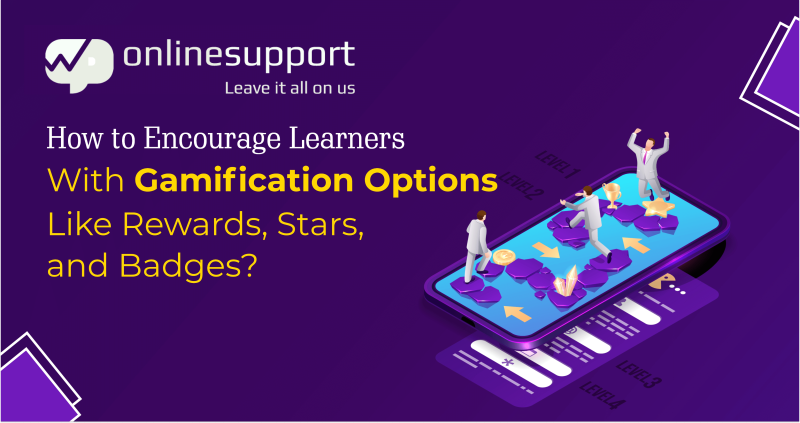Envision yourself transported to a world of nonstop action and adventure, one in which you are rewarded for your efforts no matter how difficult the task at hand. Every success you have is greeted with applause. In addition, the freedom to reach for the stars allows you to break through previously inaccessible barriers, explore previously uncharted territories, and eventually experience the elation of victory.
Is this a situation you’ve encountered before?
A game’s atmosphere is indeed very much like that.
Whether on a console or a computer, everyone has spent some time playing games. There’s no denying how much fun we have; it encourages us to rack up points, play longer, jump higher, and do more.
Allow me to ask you a basic inquiry. The question then becomes why people can play games for so long without becoming fatigued.
Engagement, interest, and participation are the correct answers.
What is gamification?
The term “gamification” refers to the practice of adding features of game design to non-game contexts, such as commercials or other promotional efforts.
Playing addictive games keeps people interested because they challenge them in ways that align with their own personal objectives and interests. The concept of gamification takes this approach and applies it to non-game goods by identifying what motivates customers to take action and then rewarding them for doing so with features like point systems, badges, or even simply plain progress indicators. The end result is something that inspires people to keep using it and makes them want more.
Examples of game mechanics include:
- Points
- Rewards
- Achievement badges
- Progress bars
- Leaderboards
- Levels/quizzes
Gamification is interesting since it is not exclusive to the educational realm. The reason why everything from fitness applications to financial apps to your LinkedIn pages gets gamified is so that more people would use them and be interested in them.
Years before digital became the norm, astute marketers took use of this strategy. Some of the first forms of gamification were McDonald’s Monopoly, frequent flyer miles, and loyalty stamp cards.
The How and Why of Gamification
Gamification “how” and “why” may be summed up in three words:
Motive, Dopamine, and the Human Brain.
How? Okay, let’s break this out.
The 5 Ps as Elements of Gamification
Everyday life has been “gamified” by incorporating dozens, if not hundreds, of gaming elements and ideas. We’ve compiled some of the most ubiquitous features in games that have led to commercial success.
- The Purpose
Instilling the feeling that you are part of something bigger than yourself and that you have been hand-picked for a heroic adventure is the essence of purpose. This is often conveyed through narrative
- The Progress
To make progress, you must show that you are doing so despite the challenges you face and in the direction of your objective. This is often represented by metrics like score, level, boss fights, and level-ups.
- The Pressure
You’re under pressure if you feel like you have to do something right this second, that you could lose if you don’t, or if you’re afraid to go back on your word. Examples of pressure include clocks with decreasing time remaining, winning streaks, and limited quantities of collectibles.
- The Position
Placement in a gamified environment means you may flaunt your achievements and pit yourself against other players. Trophy cases, badge racks, and top-scorer lists are all outward manifestations of this phenomenon in competitive settings.
- The Play
A sense of play is characterized by moments of delight, amusement, and novelty. Easter eggs, branching paths, exploration, and character creation are all examples of common play elements.
How gamification can help in woo-commerce and LMS in the WordPress segment/ industry?
Recently, gamification strategies have been widely used in ECommerce Stores. Reward and loyalty programs are used by many online businesses to attract clients, including Starbucks and Domino’s.
A recent survey of the American public indicated that 69% of respondents were influenced in their purchasing decisions by the availability of retailer rewards and loyalty programs, and 58% of respondents made at least one purchase from participating brands per month.
Here are some of the main advantages of incorporating gamification into your online shop:
- By increasing consumer participation and brand loyalty, gamification may increase the number of leads you get.
- By offering incentives for certain actions, customers are more likely to carry them out on an online shop or any other website.
- The introduction of a rewards system will increase marketing via user-to-user communication.
- You may motivate top performers even further by providing them with special privileges, such as discounts or awards reserved just for the best members.
Gamification makes the path to success more enjoyable
It’s becoming more common for product designers to include elements of gaming in their work. With some careful planning, it may be a great method to keep your people interested and make doing boring chores fun. Badly implemented gamification is a distraction and a gimmick.
To effectively implement gamification, you must strike a balance between satisfying your consumers’ serious requirements while also satisfying their need for fun.
You can use gamification to get people to do things inside your product by first figuring out what drives them, then figuring out what those things are, and then identifying how to get them done. And remember to always prioritize UX best practices:
Figure out what aspects of your product (activation events, sticky features, etc.) are most closely linked to customer satisfaction.
Users may be broken down into subsets, and their use patterns monitored so that issues can be identified and fixed.
Find out which method most of your audience prefers by doing an A/B test.
Conclusion
Don’t limit yourself creatively simply because comparable items already exist in your market niche. Make advantage of risk-taking, innovation, and input from end users. You can learn how much gamification is best for your product via trial and error.

